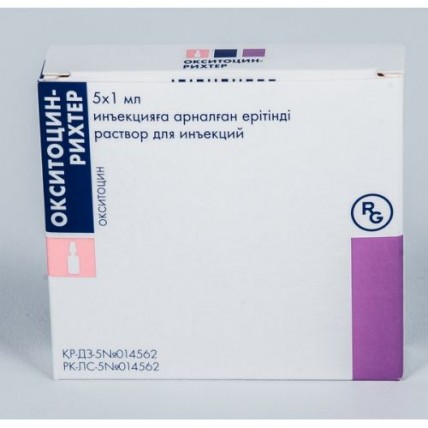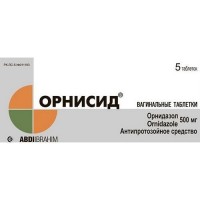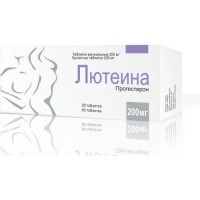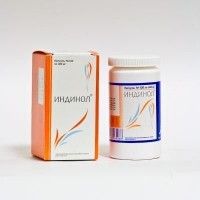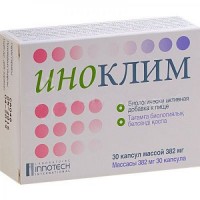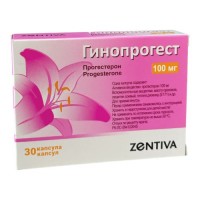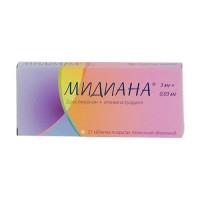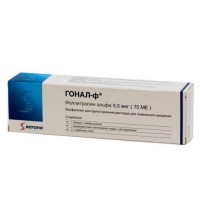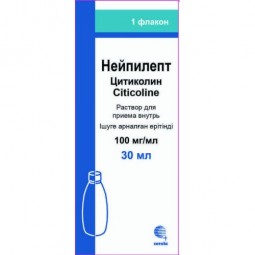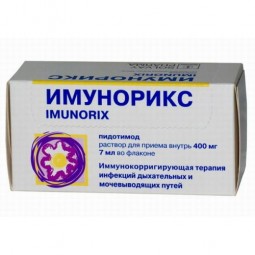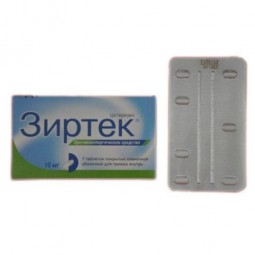Oxytocin 5 IU / ml 5's solution for injection in ampoules
- $7.00
Out Of Stock
Instruction for medical use
of medicine
OKSITOTSIN-RIHTJER
Trade name
Oxytocin - Richter
the International unlicensed
name Oxytocin Dosage Form Solution for injections
Structure
of 1 ml of solution contains
active agent - oxytocin 5 ME, excipients: acetic acid ice, chlorbutanol hemihydrate, ethanol (96%), water for injections.
Description
Colourless, transparent solution.
The pharmacotherapeutic
Oxytocin group and its analogs
the Code of automatic telephone exchange H01BB02
the Pharmacological
Pharmacokinetics At properties intravenous administration action of oxytocin on a uterus is shown almost instantly and proceeds within an hour. At intramuscular introduction the miotonichesky action comes the first 3-7 minutes and lasts for 2-3 hours.
Like vasopressin oxytocin is distributed on all extracellular space. Small amounts of oxytocin, apparently, get to blood circulation of a fruit.
Time of half-decay of oxytocin is 1-6 minutes, it is shorter in the last period of pregnancy and in the period of a lactation. The most part of drug breaks up in a liver and kidneys. In the course of enzymatic hydrolysis oxytocin is inactivated, mainly, under the influence of an oxytocinase of fabrics (the oxytocinase is also in a placenta and plasma). Only a small amount of oxytocin is removed in an invariable view with urine.
A pharmacodynamics
Kliniko-pharmakologichesky properties of Oxytocin Richter are similar to properties of endogenous oxytocin of a back share of a hypophysis. Muscles of a uterus contain receptors of the G-proteinozavisimykh family of receptors, sensitive to oxytocin. In process of pregnancy progressing the number of receptors of oxytocin and sensitivity of a uterus to it increase and by the end of pregnancy reach the maximum.
Oxytocin Richter causes reduction of smooth muscles of a uterus due to increase in concentration of intracellular potassium. To increase in amplitude and duration of muscular contractions there is an expansion and smoothing of a pharynx of a uterus. Oxytocin Richter causes pains, temporarily reducing a krovenapolneny uterus. In certain quantities oxytocin is capable to enhance sokratitelny ability of a uterus to the level characteristic of spontaneous patrimonial activity up to a tetanic state.
Oxytocin Richter causes reduction of the myoepithelial cells adjacent to alveoluses of chest gland and by that promotes milk discharge.
Influencing smooth muscles of vessels, oxytocin causes vasodilation, increases inflow of blood to kidneys, coronary vessels of heart and a brain. At the same time pressure of blood remains, usually, invariable, however at intravenous administration of high doses of the concentrated oxytocin the blood pressure can temporarily decrease with development of reflex tachycardia and reflex increase in warm emission. After some initial pressure decrease the increase in blood pressure follows long, though small.
Unlike vasopressin, oxytocin possesses weak antidiuretic action. The overhydratation is possible at simultaneous use of oxytocin with large amounts of bezelektrolitny liquids and/or at its fast introduction.
Indications
Oxytocin Richter is intended for provocation and stimulation of sokratitelny uterine activity.
in an antepartuma:
- for provocation of patrimonial activity on the last or durations of gestation, close to them, only in cases of presence of a hypertension (cardiovascular or renal etiology), a preeclampsia or an eclampsia, a fetal eritroblastoz, sugar or gestational diabetes of the pregnant woman, bleeding in the prenatal period, a precocious or premature rupture of covers of a fruit and impossibility of spontaneous permission of childbirth
- at postmature pregnancy (more than 42 weeks), pre-natal death of a fruit, a pre-natal retardation of fetation
- for strengthening of prolonged or weak labor pains in the first or second period of childbirth
in a postpartuma: in case of uterus hypotonia, for a stop of postnatal bleeding.
- as adjuvant for treatment of incomplete and cancelled abortions
for diagnostics:
- determination of respiratory power of fetoplacental unit (the loading test with oxytocin)
the Route of administration and doses
the Dose is defined with individual sensitivity of the pregnant woman and a fruit.
To provocation and strengthening of patrimonial activity oxytocin is applied only in the form of intravenous drop infusion. Observance of the ordered speed of infusion is obligatory. Safe use of oxytocin requires use of an infusional pumpa or other similar adaptation and also carrying out monitoring of uterine reductions and warm activity of a fruit. In case of excessive strengthening of sokratitelny activity of a uterus it is necessary to stop at once infusion, as a result the excess muscular uterine activity quickly decreases.
It is necessary to begin with an infundirovaniye of the normal saline solution which is not containing oxytocin.
For preparation of standard infusion of oxytocin in 1000 ml of not hydrating liquid to dissolve 1 ml (5 ME) of oxytocin and to mix. 1 ml of the infusion prepared thus contains 5 ME oxytocins. It is necessary to apply an infusional pumpa or other similar device to exact dosing of solution.
Rate of administering of an initial dose should not exceed 0.5-4 ME/min. Each 20-40 minutes it can be increased by 1-2 ME, desirable extent of contractilny activity of a uterus will not be reached yet. On reaching extent of uterine reductions, the related spontaneous patrimonial activity and disclosure of a pharynx of a uterus in the absence of signs of a fetal distress it is possible to reduce by 4-6 cm gradually infusion speed at the speed similar to its acceleration. In the terminal period of pregnancy oxytocin can be entered quicker, however at the same time it is necessary to be careful since the infusion speed reaching 8-9 ME/min. only in rare instances can be required. In case of premature births more accelerated introduction of oxytocin can be required, at the same time speed can sometimes exceed 20 ME/min.
It is necessary to control heartbeat of a fruit, a uterus tone at rest, the frequency, duration and force of its reductions.
In case of excessive uterine reductions or at a distress of a fruit it is necessary to stop immediately introduction of oxytocin and to provide to the woman in labor oxygen therapy, at the same time the woman in labor and a fruit have to be under observation of the specialist doctor.
The termination of uterine bleeding in a postpartuma:
Intravenous drop infusion: in 1000 ml of not hydrating liquid to dissolve 10-40 ME oxytocins, prevention of a uterine atony requires 20-40 ME/min. oxytocin.
Intramusculary: 1 ml (5 ME) of oxytocin after department of a placenta.
Incomplete or cancelled abortion:
10 ME oxytocins in 500 ml of normal saline solution or mix of 5% of a dextrose with normal saline solution. Speed of intravenous infusion is 20-40 thaws/min.
Diagnostics of utero-placentary insufficiency (the loading test with oxytocin):
To begin intravenous infusion with a speed of 0.5 ME/min. and each 20 minutes to double speed until the effective dose which is usually making 5-6 ME/min., at most 20 ME/min. is reached. After emergence during the 10-minute period of 3 moderate reductions lasting 40-60 sec. everyone it is necessary to stop introduction of oxytocin and to track change, i.e. delay of warm activity of a fruit.
Side effects
At women in labor:
- high doses or hypersensitivity to drug can cause a hypertension, spasms, a tetany and a hysterorrhesis, strengthening of bleeding in a puerperal period owing to thrombocytopenia, an afibrinogenemiya and a prothrombinopenia. The hematoma of a small pelvis is sometimes possible. It is possible to achieve reduction of risk of bleedings in a puerperal period, exercising systematic control of the course of childbirth
- use of high doses of oxytocin can lead to arrhythmia, premature ventrikulyarny reductions, a hypertension after hypotonia, reflex tachycardia
- nausea, vomiting
- as a result of antidiuretic action of oxytocin at its intravenous administration (usually at 40-50 ml/min.) along with a large amount of liquid is possible a heavy overhydratation. Conditions of a heavy overhydratation with spasms and a coma can develop also at slow, more than a 24-hour infundirovaniye of oxytocin. The case of death of an overhydratation of the woman in labor
- an anaphylaxis, allergic reactions
In the perinatal period is known:
- low 5-minute Apgar
- jaundice of newborns, an eye retinal apoplexy at newborns
- sinus bradycardia, tachycardia, premature ventrikulyarny reductions and other arrhythmias
- residual injuries of the central nervous system and brain
- fruit death because of asphyxia as consequences of strengthening of contractilny uterine activity
of the Contraindication
- hypersensitivity to oxytocin
- a narrow basin (heavy extent of narrowing)
- the adverse provision of a fruit interfering spontaneous delivery
- the emergency, demanding surgical intervention situations caused by a condition of the woman in labor or a fruit
- a condition of a distress of a fruit long before terminal durations of gestation
- a uterine hypertension
- existence of contraindications for vaginal childbirth (for example, sticking of an umbilical cord, full placental presentation and marginal placental presentation (vasa previa)
In cases of a heavy toxaemia or weak sokratitelny patrimonial uterine activity the prolonged use of oxytocin is contraindicated.
Medicinal interactions
At introduction of oxytocin in 3-4 hours after combined use of vasoconstrictors and caudal anesthesia the heavy hypertension is possible.
At simultaneous use with inhalation anesthetics the hypotensive action of oxytocin amplifies and its promoting effect on a uterus is weakened.
Prostaglandins exponentiate promoting effect of oxytocin on a uterus.
Oxytocin can exponentiate pressor action of sympathomimetic means.
Special instructions
Only for stationary use.
Ready infusion should be used in the first 8 hours after preparation.
Except for special cases, use of oxytocin is not recommended at premature births, at considerable extent of narrowing of a basin, earlier undergone operation on a uterus or a neck of the uterus, including after Cesarean section, excessive increase in a tone of a uterus, multiple pregnancy, an invasive stage of a carcinoma of a neck of the uterus. Until formation of a head or a basin of a fruit in an entrance of a basin it is impossible to apply oxytocin to provocation of childbirth. Identification of the so-called special cases caused by combinations of various factors is a task of the doctor. Before starting use of oxytocin it is necessary to weigh carefully expected favorable effects of therapy with danger, though rare, hypertensions and tetanies of a uterus.
For the purpose of provocation of childbirth and strengthening of sokratitelny activity of a uterus oxytocin is applied exclusively intravenously, in a hospital and at the corresponding medical observation. Each patient receiving infusion of oxytocin has to be under constant observation of the doctor well familiar with drug and its side effects. The specialist doctor who had special training has to be nearby in case of development of side effects.
In order to avoid complications it is necessary to control constantly uterine counteractions, warm activity of the woman in labor and a fruit, arterial blood pressure of the woman in labor. At the first signs of hyperactivity of a uterus it is necessary to stop immediately introduction of oxytocin, as a result of it the uterine reductions caused by drug usually, soon abate.
At adequate use oxytocin causes the uterine reductions similar to spontaneous childbirth. The excessive stimulation arising at the wrong use of drug is dangerous both to the woman in labor, and to a fruit.
It must be kept in mind that in hypersensitivity cases to drug the hypertensive counteractions are possible also at adequate use of drug. It is necessary to consider a possibility of strengthening of bleeding and development of an afibrinogenemiya.
Cases of death of the woman in labor as a result of hypersensitivity reactions, subarachnoidal hemorrhage, a hysterorrhesis and also fruit death cases are known for various reasons during parenteral use of drug for the purpose of provocation of childbirth and stimulation of uterine reductions.
Antidiuretic effect of drug promotes a water delay in an organism. It is necessary to reckon with a possibility of an overhydratation especially at use of continuous infusion of oxytocin and the use of liquid inside.
At parenteral administration it is possible to apply either only intravenously, or only intramusculary.
Pregnancy and a lactation
In the first trimester of pregnancy apply oxytocin only at the spontaneous or induced abortions.
Chemical, pharmacological properties of oxytocin and numerous data on its use indicate that at use of drug according to instructions, the probability of its influence on increase in frequency of cases of malformations of a fruit is small.
In small amounts gets into breast milk.
In cases of use of drug for a stop of uterine bleeding a breast it is possible to start feeding only upon termination of a course of treatment oxytocin.
Features of influence of medicine on ability to run the vehicle or potentially dangerous mechanisms
Oksitotsin does not affect ability to drive the car and other potentially dangerous mechanisms.
Overdose
Symptoms of overdose depend on degree of sensitivity of a uterus to oxytocin and are not connected with presence of hypersensitivity to active component of drug. Hyper stimulation can lead to strong (hypertensive) and long (tetanic) counteractions, or to rapid childbirth with a characteristic basic tone at 15-20 and more than a mm of a water column, measured between two reductions and also can cause a rupture of a body or neck of the uterus, vagina, bleeding in a postpartuma, utero-placentary hypoperfusion, delay of warm activity of a fruit, a hypoxia, a hypercapnia and death of a fruit.
Prolonged use of drug in high doses (40-50 ml/min.) can be followed by heavy side effect - the overhydratation caused by antidiuretic effect of oxytocin.
Treatment: termination of infusion of oxytocin, liquid use restriction, use of diuretics, intravenous administration of hypertonic saline solution, correction of electrolytic balance, stopping of spasms with barbiturates and ensuring professional care for the coma patient.
A form of release and packing
of 1 ml of injection solution in a colourless glass ampoule with a point for a break. 5 ampoules in a cardboard box with the enclosed instruction for medical use.
To Store storage conditions at a temperature from +2 °C to +15 °C.
To store out of children's reach!
3 years
After expiry date drug not to use a period of storage.
Budapest JSC Gideon Richter producer 1103, Djemrei St., 19-21, Hungary
to Develop prescription status According to the prescription
of medicine
OKSITOTSIN-RIHTJER
Trade name
Oxytocin - Richter
the International unlicensed
name Oxytocin Dosage Form Solution for injections
Structure
of 1 ml of solution contains
active agent - oxytocin 5 ME, excipients: acetic acid ice, chlorbutanol hemihydrate, ethanol (96%), water for injections.
Description
Colourless, transparent solution.
The pharmacotherapeutic
Oxytocin group and its analogs
the Code of automatic telephone exchange H01BB02
the Pharmacological
Pharmacokinetics At properties intravenous administration action of oxytocin on a uterus is shown almost instantly and proceeds within an hour. At intramuscular introduction the miotonichesky action comes the first 3-7 minutes and lasts for 2-3 hours.
Like vasopressin oxytocin is distributed on all extracellular space. Small amounts of oxytocin, apparently, get to blood circulation of a fruit.
Time of half-decay of oxytocin is 1-6 minutes, it is shorter in the last period of pregnancy and in the period of a lactation. The most part of drug breaks up in a liver and kidneys. In the course of enzymatic hydrolysis oxytocin is inactivated, mainly, under the influence of an oxytocinase of fabrics (the oxytocinase is also in a placenta and plasma). Only a small amount of oxytocin is removed in an invariable view with urine.
A pharmacodynamics
Kliniko-pharmakologichesky properties of Oxytocin Richter are similar to properties of endogenous oxytocin of a back share of a hypophysis. Muscles of a uterus contain receptors of the G-proteinozavisimykh family of receptors, sensitive to oxytocin. In process of pregnancy progressing the number of receptors of oxytocin and sensitivity of a uterus to it increase and by the end of pregnancy reach the maximum.
Oxytocin Richter causes reduction of smooth muscles of a uterus due to increase in concentration of intracellular potassium. To increase in amplitude and duration of muscular contractions there is an expansion and smoothing of a pharynx of a uterus. Oxytocin Richter causes pains, temporarily reducing a krovenapolneny uterus. In certain quantities oxytocin is capable to enhance sokratitelny ability of a uterus to the level characteristic of spontaneous patrimonial activity up to a tetanic state.
Oxytocin Richter causes reduction of the myoepithelial cells adjacent to alveoluses of chest gland and by that promotes milk discharge.
Influencing smooth muscles of vessels, oxytocin causes vasodilation, increases inflow of blood to kidneys, coronary vessels of heart and a brain. At the same time pressure of blood remains, usually, invariable, however at intravenous administration of high doses of the concentrated oxytocin the blood pressure can temporarily decrease with development of reflex tachycardia and reflex increase in warm emission. After some initial pressure decrease the increase in blood pressure follows long, though small.
Unlike vasopressin, oxytocin possesses weak antidiuretic action. The overhydratation is possible at simultaneous use of oxytocin with large amounts of bezelektrolitny liquids and/or at its fast introduction.
Indications
Oxytocin Richter is intended for provocation and stimulation of sokratitelny uterine activity.
in an antepartuma:
- for provocation of patrimonial activity on the last or durations of gestation, close to them, only in cases of presence of a hypertension (cardiovascular or renal etiology), a preeclampsia or an eclampsia, a fetal eritroblastoz, sugar or gestational diabetes of the pregnant woman, bleeding in the prenatal period, a precocious or premature rupture of covers of a fruit and impossibility of spontaneous permission of childbirth
- at postmature pregnancy (more than 42 weeks), pre-natal death of a fruit, a pre-natal retardation of fetation
- for strengthening of prolonged or weak labor pains in the first or second period of childbirth
in a postpartuma: in case of uterus hypotonia, for a stop of postnatal bleeding.
- as adjuvant for treatment of incomplete and cancelled abortions
for diagnostics:
- determination of respiratory power of fetoplacental unit (the loading test with oxytocin)
the Route of administration and doses
the Dose is defined with individual sensitivity of the pregnant woman and a fruit.
To provocation and strengthening of patrimonial activity oxytocin is applied only in the form of intravenous drop infusion. Observance of the ordered speed of infusion is obligatory. Safe use of oxytocin requires use of an infusional pumpa or other similar adaptation and also carrying out monitoring of uterine reductions and warm activity of a fruit. In case of excessive strengthening of sokratitelny activity of a uterus it is necessary to stop at once infusion, as a result the excess muscular uterine activity quickly decreases.
It is necessary to begin with an infundirovaniye of the normal saline solution which is not containing oxytocin.
For preparation of standard infusion of oxytocin in 1000 ml of not hydrating liquid to dissolve 1 ml (5 ME) of oxytocin and to mix. 1 ml of the infusion prepared thus contains 5 ME oxytocins. It is necessary to apply an infusional pumpa or other similar device to exact dosing of solution.
Rate of administering of an initial dose should not exceed 0.5-4 ME/min. Each 20-40 minutes it can be increased by 1-2 ME, desirable extent of contractilny activity of a uterus will not be reached yet. On reaching extent of uterine reductions, the related spontaneous patrimonial activity and disclosure of a pharynx of a uterus in the absence of signs of a fetal distress it is possible to reduce by 4-6 cm gradually infusion speed at the speed similar to its acceleration. In the terminal period of pregnancy oxytocin can be entered quicker, however at the same time it is necessary to be careful since the infusion speed reaching 8-9 ME/min. only in rare instances can be required. In case of premature births more accelerated introduction of oxytocin can be required, at the same time speed can sometimes exceed 20 ME/min.
It is necessary to control heartbeat of a fruit, a uterus tone at rest, the frequency, duration and force of its reductions.
In case of excessive uterine reductions or at a distress of a fruit it is necessary to stop immediately introduction of oxytocin and to provide to the woman in labor oxygen therapy, at the same time the woman in labor and a fruit have to be under observation of the specialist doctor.
The termination of uterine bleeding in a postpartuma:
Intravenous drop infusion: in 1000 ml of not hydrating liquid to dissolve 10-40 ME oxytocins, prevention of a uterine atony requires 20-40 ME/min. oxytocin.
Intramusculary: 1 ml (5 ME) of oxytocin after department of a placenta.
Incomplete or cancelled abortion:
10 ME oxytocins in 500 ml of normal saline solution or mix of 5% of a dextrose with normal saline solution. Speed of intravenous infusion is 20-40 thaws/min.
Diagnostics of utero-placentary insufficiency (the loading test with oxytocin):
To begin intravenous infusion with a speed of 0.5 ME/min. and each 20 minutes to double speed until the effective dose which is usually making 5-6 ME/min., at most 20 ME/min. is reached. After emergence during the 10-minute period of 3 moderate reductions lasting 40-60 sec. everyone it is necessary to stop introduction of oxytocin and to track change, i.e. delay of warm activity of a fruit.
Side effects
At women in labor:
- high doses or hypersensitivity to drug can cause a hypertension, spasms, a tetany and a hysterorrhesis, strengthening of bleeding in a puerperal period owing to thrombocytopenia, an afibrinogenemiya and a prothrombinopenia. The hematoma of a small pelvis is sometimes possible. It is possible to achieve reduction of risk of bleedings in a puerperal period, exercising systematic control of the course of childbirth
- use of high doses of oxytocin can lead to arrhythmia, premature ventrikulyarny reductions, a hypertension after hypotonia, reflex tachycardia
- nausea, vomiting
- as a result of antidiuretic action of oxytocin at its intravenous administration (usually at 40-50 ml/min.) along with a large amount of liquid is possible a heavy overhydratation. Conditions of a heavy overhydratation with spasms and a coma can develop also at slow, more than a 24-hour infundirovaniye of oxytocin. The case of death of an overhydratation of the woman in labor
- an anaphylaxis, allergic reactions
In the perinatal period is known:
- low 5-minute Apgar
- jaundice of newborns, an eye retinal apoplexy at newborns
- sinus bradycardia, tachycardia, premature ventrikulyarny reductions and other arrhythmias
- residual injuries of the central nervous system and brain
- fruit death because of asphyxia as consequences of strengthening of contractilny uterine activity
of the Contraindication
- hypersensitivity to oxytocin
- a narrow basin (heavy extent of narrowing)
- the adverse provision of a fruit interfering spontaneous delivery
- the emergency, demanding surgical intervention situations caused by a condition of the woman in labor or a fruit
- a condition of a distress of a fruit long before terminal durations of gestation
- a uterine hypertension
- existence of contraindications for vaginal childbirth (for example, sticking of an umbilical cord, full placental presentation and marginal placental presentation (vasa previa)
In cases of a heavy toxaemia or weak sokratitelny patrimonial uterine activity the prolonged use of oxytocin is contraindicated.
Medicinal interactions
At introduction of oxytocin in 3-4 hours after combined use of vasoconstrictors and caudal anesthesia the heavy hypertension is possible.
At simultaneous use with inhalation anesthetics the hypotensive action of oxytocin amplifies and its promoting effect on a uterus is weakened.
Prostaglandins exponentiate promoting effect of oxytocin on a uterus.
Oxytocin can exponentiate pressor action of sympathomimetic means.
Special instructions
Only for stationary use.
Ready infusion should be used in the first 8 hours after preparation.
Except for special cases, use of oxytocin is not recommended at premature births, at considerable extent of narrowing of a basin, earlier undergone operation on a uterus or a neck of the uterus, including after Cesarean section, excessive increase in a tone of a uterus, multiple pregnancy, an invasive stage of a carcinoma of a neck of the uterus. Until formation of a head or a basin of a fruit in an entrance of a basin it is impossible to apply oxytocin to provocation of childbirth. Identification of the so-called special cases caused by combinations of various factors is a task of the doctor. Before starting use of oxytocin it is necessary to weigh carefully expected favorable effects of therapy with danger, though rare, hypertensions and tetanies of a uterus.
For the purpose of provocation of childbirth and strengthening of sokratitelny activity of a uterus oxytocin is applied exclusively intravenously, in a hospital and at the corresponding medical observation. Each patient receiving infusion of oxytocin has to be under constant observation of the doctor well familiar with drug and its side effects. The specialist doctor who had special training has to be nearby in case of development of side effects.
In order to avoid complications it is necessary to control constantly uterine counteractions, warm activity of the woman in labor and a fruit, arterial blood pressure of the woman in labor. At the first signs of hyperactivity of a uterus it is necessary to stop immediately introduction of oxytocin, as a result of it the uterine reductions caused by drug usually, soon abate.
At adequate use oxytocin causes the uterine reductions similar to spontaneous childbirth. The excessive stimulation arising at the wrong use of drug is dangerous both to the woman in labor, and to a fruit.
It must be kept in mind that in hypersensitivity cases to drug the hypertensive counteractions are possible also at adequate use of drug. It is necessary to consider a possibility of strengthening of bleeding and development of an afibrinogenemiya.
Cases of death of the woman in labor as a result of hypersensitivity reactions, subarachnoidal hemorrhage, a hysterorrhesis and also fruit death cases are known for various reasons during parenteral use of drug for the purpose of provocation of childbirth and stimulation of uterine reductions.
Antidiuretic effect of drug promotes a water delay in an organism. It is necessary to reckon with a possibility of an overhydratation especially at use of continuous infusion of oxytocin and the use of liquid inside.
At parenteral administration it is possible to apply either only intravenously, or only intramusculary.
Pregnancy and a lactation
In the first trimester of pregnancy apply oxytocin only at the spontaneous or induced abortions.
Chemical, pharmacological properties of oxytocin and numerous data on its use indicate that at use of drug according to instructions, the probability of its influence on increase in frequency of cases of malformations of a fruit is small.
In small amounts gets into breast milk.
In cases of use of drug for a stop of uterine bleeding a breast it is possible to start feeding only upon termination of a course of treatment oxytocin.
Features of influence of medicine on ability to run the vehicle or potentially dangerous mechanisms
Oksitotsin does not affect ability to drive the car and other potentially dangerous mechanisms.
Overdose
Symptoms of overdose depend on degree of sensitivity of a uterus to oxytocin and are not connected with presence of hypersensitivity to active component of drug. Hyper stimulation can lead to strong (hypertensive) and long (tetanic) counteractions, or to rapid childbirth with a characteristic basic tone at 15-20 and more than a mm of a water column, measured between two reductions and also can cause a rupture of a body or neck of the uterus, vagina, bleeding in a postpartuma, utero-placentary hypoperfusion, delay of warm activity of a fruit, a hypoxia, a hypercapnia and death of a fruit.
Prolonged use of drug in high doses (40-50 ml/min.) can be followed by heavy side effect - the overhydratation caused by antidiuretic effect of oxytocin.
Treatment: termination of infusion of oxytocin, liquid use restriction, use of diuretics, intravenous administration of hypertonic saline solution, correction of electrolytic balance, stopping of spasms with barbiturates and ensuring professional care for the coma patient.
A form of release and packing
of 1 ml of injection solution in a colourless glass ampoule with a point for a break. 5 ampoules in a cardboard box with the enclosed instruction for medical use.
To Store storage conditions at a temperature from +2 °C to +15 °C.
To store out of children's reach!
3 years
After expiry date drug not to use a period of storage.
Budapest JSC Gideon Richter producer 1103, Djemrei St., 19-21, Hungary
to Develop prescription status According to the prescription
